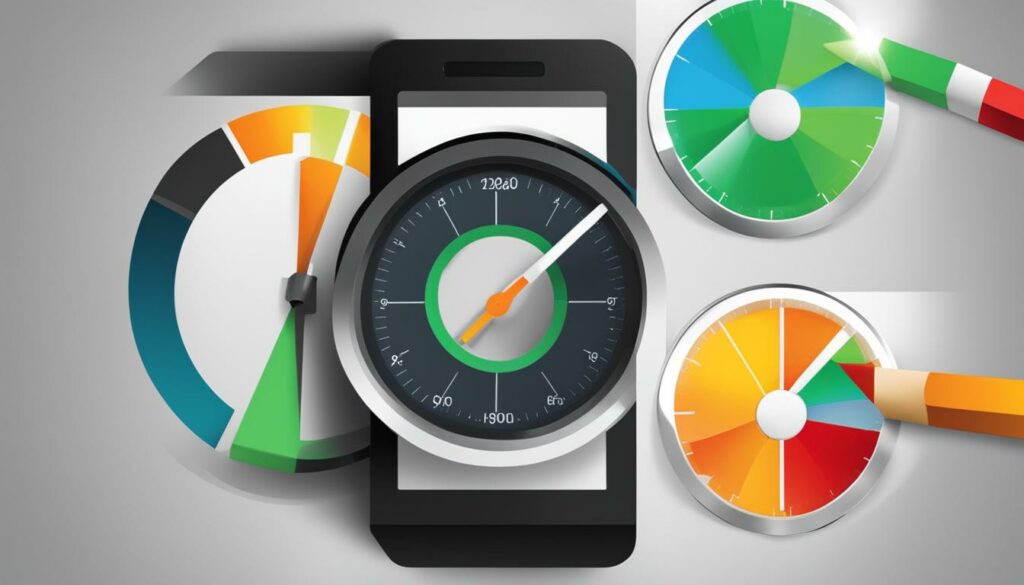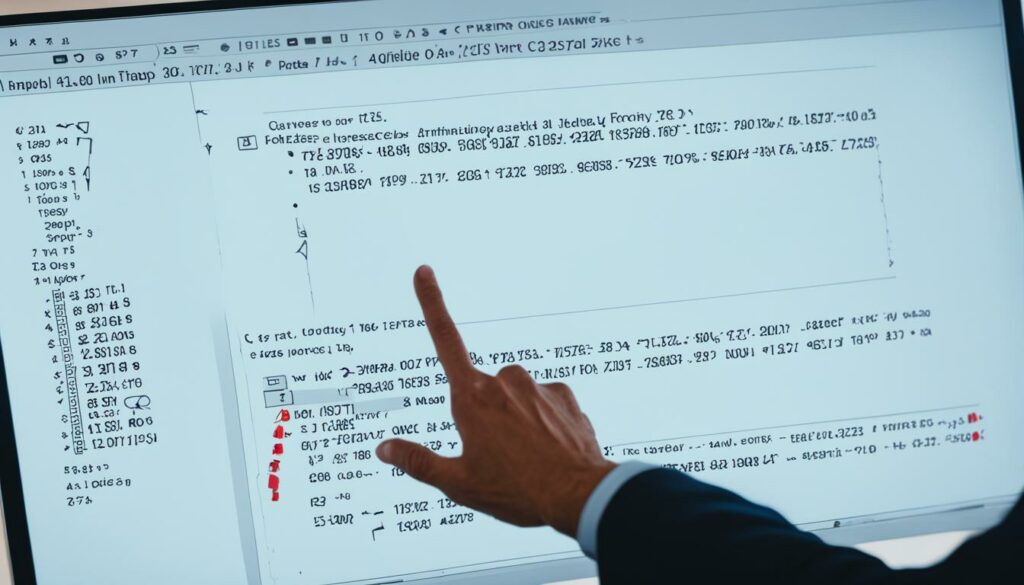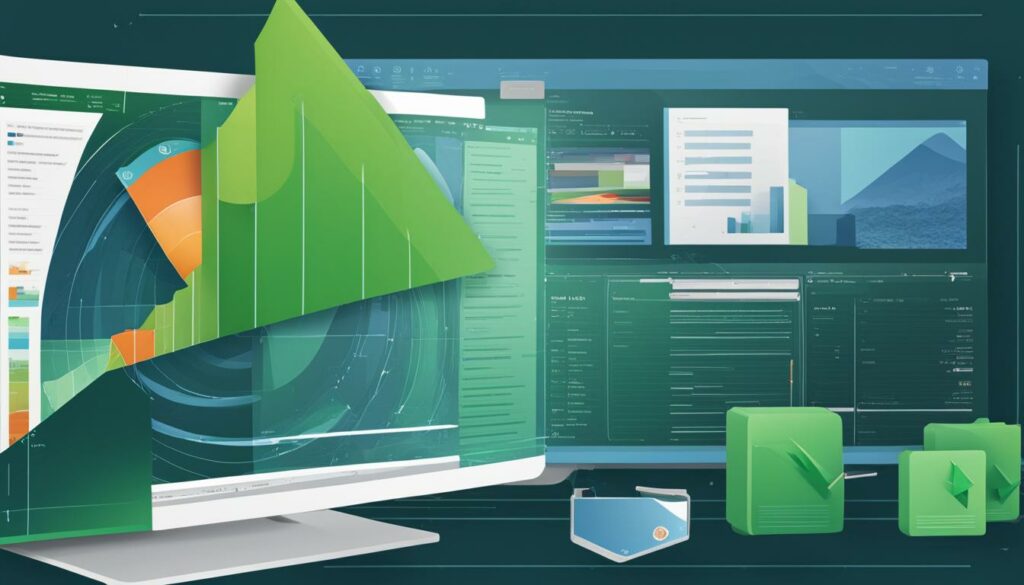Welcome to our guide on optimizing images for faster loading on WordPress! As a WordPress site owner, you know that slow loading times can negatively impact user experience and website performance. The good news is that by implementing image optimization techniques, you can significantly improve the speed and efficiency of your site.
High-resolution images and media-rich content are often the culprits behind sluggish loading times. However, with the right image optimization practices and plugins, you can reduce file sizes and optimize images to enhance the overall speed and performance of your WordPress website.
At BoostedHost, we highly recommend using WordPress Hosting for optimal performance. Our hosting solutions are specifically optimized for WordPress, ensuring lightning-fast loading times and seamless user experiences. Sign up now through this link: www.boostedhost.com/wordpress-hosting.
Key Takeaways:
- WordPress image optimization is essential for improving website performance and loading speed.
- High-resolution images and media-rich content can significantly impact the speed of your WordPress site.
- Image optimization plugins help reduce file sizes and improve loading times.
- Automatically resizing images and choosing the right file formats are crucial for optimal image optimization.
- Lazy loading and compression techniques can further enhance the speed and efficiency of your WordPress site.
The Importance of Image Compression
Image compression plays a crucial role in optimizing your website’s performance and user experience. By reducing the file size of images without compromising visual quality, you can significantly improve loading times. Let’s explore the different techniques and their impact.
Lossy Compression
Lossy compression is an image compression technique that removes unnecessary data from an image file. While it results in smaller file sizes, it may lead to a slight decrease in visual quality. However, the reduction in file size makes lossy compression an effective method for improving loading times.
Lossless Compression
Lossless compression, on the other hand, reduces the file size of images without any loss of visual quality. This technique is achieved by eliminating redundant data within the image file. Lossless compression is ideal for scenarios where maintaining the highest visual quality is crucial.
To illustrate the impact of image compression, let’s consider an example:
| Image | Original File Size | Compressed File Size | Compression Ratio | Visual Quality |
|---|---|---|---|---|
| 5MB | 1MB | 5:1 | High |
In the example above, the image file size was reduced from 5MB to 1MB, resulting in a compression ratio of 5:1. Despite the compression, the visual quality remains high.
By compressing your images, you can significantly reduce the loading times of your website. This, in turn, improves the overall user experience and reduces bounce rates.
“Image compression is crucial for reducing file sizes and improving loading times without compromising on visual quality.”
Next, let’s explore the benefits of automatic image resizing in optimizing your website’s performance.
Automatic Image Resizing
One of the key features offered by WordPress image optimization plugins is automatic image resizing. By implementing this feature, the plugins are able to resize images according to the specified dimensions of the theme. As a result, the file size of the images is further reduced, contributing to faster loading speeds. Automatic image resizing plays a crucial role in enhancing the overall performance of a website by reducing the amount of data that needs to be loaded.
With automatic image resizing, you no longer need to manually resize each image before uploading it to your WordPress site. The plugin takes care of the resizing process for you, ensuring that the images meet the required dimensions without compromising their quality. This convenient feature not only saves you time and effort but also optimizes the loading speed of your website.
By reducing the file size of images through automatic resizing, you can significantly improve the loading speed of your website. Large images can slow down the loading process, leading to a poor user experience and higher bounce rates. By implementing automatic image resizing, you ensure that your website loads quickly and efficiently, providing a seamless browsing experience for your visitors.
Reducing the file size of images through automatic resizing has a direct impact on the loading speed of your website. As the image dimensions are adjusted to fit the specifications of your theme, the amount of data that needs to be loaded decreases, resulting in faster loading times. This improvement in loading speed not only enhances the overall user experience but also positively contributes to SEO factors, as search engines prioritize websites with faster loading times.
Format Conversion for Optimal Compression
When it comes to optimizing images on your WordPress website, format conversion plays a crucial role in achieving optimal compression and improving overall website performance. WordPress image optimization plugins, like ShortPixel, offer a convenient solution by analyzing images and converting them to the most suitable format.
Different image formats, such as PNG, JPEG, GIF, and WebP, have varying levels of compression and visual quality. By selecting the most appropriate format, you can achieve optimal compression while maintaining the visual integrity of your images.
WebP, in particular, is a newer image format that offers better compression than JPEG or PNG. By converting your images to WebP, you can significantly reduce their file size without compromising visual quality. This helps to improve website performance and enhance the browsing experience for your visitors.
Check out the example below to see how WebP format conversion can make a difference in image compression:
| Image Format | Original Size | Compressed Size (WebP) | Compression Ratio |
|---|---|---|---|
| PNG | 1.2MB | 250KB | 79% |
| JPEG | 800KB | 150KB | 81% |
| GIF | 500KB | 100KB | 80% |
As you can see, format conversion to WebP can result in significant file size reductions while maintaining excellent visual quality. By integrating WordPress image optimization plugins like ShortPixel that offer format conversion capabilities, you can ensure your images are compressed in the most efficient and effective way, ultimately improving your website’s performance and speed.
Choose the Right Image Optimization Plugin
When selecting an image optimization plugin for your WordPress website, consider factors such as compatibility, user-friendliness, and support for modern image formats like WebP. It’s essential to choose a plugin that seamlessly integrates with your WordPress theme and provides easy configuration options for optimizing images.
A popular and highly recommended WordPress hosting provider for optimal performance is BoostedHost.
The Benefits of Lazy Loading
Lazy loading is an effective technique that can significantly improve your website’s performance and enhance the browsing experience for your users. By delaying the loading of images until they are needed, lazy loading conserves bandwidth and reduces image loading times, resulting in faster page load speeds.
When a web page contains multiple images, lazy loading becomes particularly valuable. Instead of loading all the images at once, only the images that are currently in the viewport are loaded, while the rest are loaded as the user scrolls down the page. This intelligent loading strategy prioritizes the loading of essential content first, ensuring a seamless browsing experience for your visitors.
The benefits of lazy loading extend beyond bandwidth conservation and faster page loading times. By reducing the initial load on your website, lazy loading minimizes the strain on your server and improves overall server performance. This can be particularly advantageous if you have a high-traffic website with heavy media-rich content.
Lazy loading also enhances the mobile browsing experience, where bandwidth and data usage are often more limited. By only loading images as they become visible, lazy loading optimizes the use of limited data plans and improves browsing speeds on mobile devices.
Implementing Lazy Loading:
- Add the lazy loading attribute to your
<img>tags:loading="lazy". - Make use of lazy loading libraries or plugins available for your website’s CMS platform, such as Lazy Load or Lazy Load by WP Rocket, to simplify implementation and customization.
Leveraging lazy loading can have a significant impact on your website’s performance and user experience. By conserving bandwidth, reducing image loading times, and prioritizing essential content, lazy loading offers a seamless browsing experience and enhances the overall performance of your website.
Start optimizing your website today and take advantage of lazy loading and other performance-enhancing techniques. Sign up for WordPress Hosting from BoostedHost to ensure optimal performance and speed for your WordPress site.
Considerations When Choosing an Image Optimization Plugin
When it comes to selecting an image optimization plugin for your WordPress website, there are a few important factors to keep in mind. These considerations will help ensure compatibility, ease of use, and optimal performance. Let’s take a closer look at what to consider:
Compatibility
One of the first things you need to check is compatibility. Make sure the image optimization plugin is compatible with your WordPress theme and any other plugins you have installed. This will ensure seamless integration and prevent any issues with your website’s visual integrity.
User-Friendly Interfaces
Opting for a plugin with a user-friendly interface is crucial, especially if you are new to image optimization. Look for plugins that offer intuitive dashboards and straightforward settings. This will make it easier for you to optimize images according to your specific needs, even if you don’t have a technical background.
Configuration Options
Configurability is another important aspect to consider when choosing an image optimization plugin. Look for plugins that offer a variety of configuration options, allowing you to customize the optimization process according to your preferences. This flexibility ensures that you can strike the right balance between image quality and file size.
Support for Modern Image Formats
Modern image formats, such as WebP, offer superior compression and smaller file sizes without sacrificing visual quality. Check if the image optimization plugin supports these modern formats to further enhance your website’s performance. By using modern image formats, you can provide a better user experience with faster loading times.
Performance Benchmarks and User Reviews
Before finalizing your decision, it’s a good idea to review performance benchmarks and user feedback for different image optimization plugins. This will give you a better understanding of how effective and reliable a particular plugin is. Look for plugins that consistently deliver high performance and have positive reviews from other WordPress users.
Remember, selecting the right image optimization plugin is essential to ensure smooth integration, user-friendly experience, and improved website performance. Consider the factors mentioned above to make an informed decision that suits your specific needs and goals.
We recommend WordPress Hosting from BoostedHost for optimal performance. Sign up now through this link: www.boostedhost.com/wordpress-hosting.

| Plugin | Compatibility | User-Friendly Interface | Configuration Options | Support for Modern Formats | Performance |
|---|---|---|---|---|---|
| Smush | Compatible with most WordPress themes and plugins | Intuitive dashboard with easy-to-use settings | Customizable optimization options | Supports WebP and other modern formats | High-performance plugin with positive user reviews |
| ShortPixel | Seamless integration with popular WordPress themes and plugins | User-friendly interface for easy optimization | Advanced configuration options for optimization | Full support for WebP and other modern formats | Excellent performance and highly recommended by users |
| Imagify | Compatible with a wide range of WordPress themes and plugins | Simple and intuitive interface for hassle-free optimization | Flexible optimization settings to suit your needs | Optimizes images in WebP format for optimal performance | Reliable performance and positive user feedback |
Monitoring and Analyzing Performance
Monitoring and analyzing loading speed improvements are essential for optimizing your WordPress site’s performance. By measuring loading speed and tracking user experience, you can identify areas for improvement and enhance the overall performance of your website. One powerful tool that can assist in this process is Google’s PageSpeed Insights.
Google’s PageSpeed Insights provides performance metrics and recommendations to improve load times. By entering your website URL into the tool, you receive insights about your website’s loading speed, including performance scores for both mobile and desktop devices. These scores take into account various factors, such as server response times, CSS and JavaScript optimization, and image optimization.
By analyzing the suggestions provided by PageSpeed Insights, you can make targeted improvements to your website’s loading speed. The tool suggests optimizations like enabling compression, leveraging browser caching, and reducing server response time, among others. Implementing these recommendations can lead to significant loading speed improvements and enhance the user experience.
Additionally, PageSpeed Insights offers performance metrics that highlight specific areas for improvement. These metrics include:
- First Contentful Paint (FCP): Measures the time it takes for the first piece of content to appear on the user’s screen.
- Time to Interactive (TTI): Measures the time it takes for the page to become fully interactive for the user.
- Total Blocking Time (TBT): Measures the amount of time during which the main thread is blocked and unable to respond to user input.
By tracking these performance metrics and continuously monitoring your website’s loading speed, you can make data-driven optimizations to enhance the user experience. Aim for a loading speed of three seconds or less, as research shows that a one-second delay in loading time can result in a 7% reduction in conversions.
| Metric | Optimal Range | Action |
|---|---|---|
| First Contentful Paint (FCP) | 0-1 second | Optimize server response time, reduce render-blocking resources, and improve JavaScript and CSS delivery. |
| Time to Interactive (TTI) | 0-3 seconds | Minimize main thread work and reduce JavaScript execution time. |
| Total Blocking Time (TBT) | 0-300 milliseconds | Minimize long tasks and reduce execution times of JavaScript. |
BoostedHost WordPress Hosting: A Performance-Focused Solution
When it comes to optimizing your WordPress site’s performance, choosing the right hosting provider is crucial. BoostedHost offers high-performance WordPress hosting tailored to meet the demands of websites with optimized loading speeds.
With BoostedHost’s WordPress Hosting, you can benefit from:
- Optimized server configurations for faster WordPress performance.
- Enhanced caching and content delivery network (CDN) integration to improve loading speeds worldwide.
- Robust security measures to protect your website and its valuable data.
- Expert support from a team of WordPress professionals.
Don’t let slow loading times hamper your website’s performance and user experience. Sign up for BoostedHost WordPress Hosting now through this link and experience exceptional loading speed improvements.
The Impact of Image Optimization on Conversions
Optimizing images on your WordPress website can have a significant impact on conversions. When visitors land on your site, the loading speed plays a crucial role in capturing and retaining their attention. Slow-loading images can frustrate users and increase bounce rates, leading to missed conversion opportunities.
By leveraging image optimization plugins and techniques, you can create a seamless browsing experience that encourages visitors to stay on your site and take desired actions. When your website loads quickly, users are more likely to engage with your content, explore your offerings, and ultimately convert into customers.
Image optimization not only improves loading times but also enhances user engagement. When users can easily navigate your website and access relevant information without delays, they are more likely to stay and interact with your content. This increased engagement boosts the chances of conversion, whether it’s making a purchase, filling out a contact form, or subscribing to your newsletter.
Furthermore, optimizing images can significantly reduce the bounce rate, which is the percentage of visitors who leave your site after viewing only one page. When visitors encounter slow-loading images, they may lose interest and exit the site before exploring further. By optimizing images and ensuring fast loading speeds, you can create a positive first impression and encourage visitors to explore more pages on your site.
To illustrate the impact of image optimization on conversions, consider the following statistics:
According to studies, a 1-second delay in webpage load time can lead to a 7% reduction in conversions. On the other hand, a fast-loading website can result in a 1% to 2% increase in conversion rates.
These numbers highlight the significant role that image optimization plays in driving conversions and maximizing the potential of your WordPress website.

If you’re looking to optimize your WordPress website for maximum conversions, consider BoostedHost’s WordPress Hosting. With their optimized server infrastructure and dedicated support, BoostedHost ensures fast loading times and reliable performance for your website. Sign up now through this link: www.boostedhost.com/wordpress-hosting.
The Role of File Formats in Faster Loading
Choosing the right file format for your images plays a crucial role in faster loading speeds. By selecting the appropriate image format, you can ensure both optimal visual fidelity and improved loading times.
JPEG is the go-to format for photographs and images with gradients. It offers efficient compression while maintaining a high level of visual quality. If your website features content-heavy visuals, such as product images or professional photography, using JPEG format can help balance loading speeds and visual appeal.
PNG format, on the other hand, is well-suited for images with transparent backgrounds and sharp lines. It is a lossless compression format, meaning it doesn’t sacrifice any visual quality, but it often results in larger file sizes. PNG is ideal for graphics, logos, and images that require precise details.
For the best of both worlds, you can consider the WebP format. This newer image format offers smaller file sizes without compromising visual quality. WebP is designed to provide superior compression, making it an excellent choice for optimizing loading speeds while maintaining exceptional image fidelity.
When it comes to image formats, it’s essential to find the right balance between visual fidelity and loading speeds. Consider the nature of your images and the specific requirements of your website to determine which format suits your needs best.
| Format | Best Use | Compression | Visual Fidelity |
|---|---|---|---|
| JPEG | Photographs, images with gradients | Lossy | High visual quality |
| PNG | Graphics, logos, images with transparent backgrounds and sharp lines | Lossless | Excellent visual quality |
| WebP | Optimizing loading speeds while maintaining visual fidelity | Lossy and lossless compression | Superior compression with excellent quality |
Resizing Images for Optimal Performance
When it comes to optimizing the performance of your website, resizing images is a crucial step. Uploading high-resolution images and then scaling them down using HTML or CSS may seem convenient, but it can negatively impact your web page loading times. To ensure optimal performance, it’s important to resize images to the exact dimensions required for display on your website.
Resizing images before uploading them offers several benefits. Firstly, it reduces the file size of the images, which directly contributes to faster web page loading times. Smaller file sizes mean less data needs to be transferred, resulting in quicker loading speeds and improved user experience. Secondly, resizing images before uploading them saves bandwidth, making your website more efficient in terms of data consumption.
Resizing images also plays a role in future-proofing your website. As layouts and screen technologies evolve, it’s important to choose dimensions that will accommodate these changes. By resizing images based on current requirements and considering potential future changes, you can ensure that your website remains visually appealing and performs well on a variety of devices.
To illustrate the importance of image resizing, consider the following example:
You have a blog post that includes a large image with a resolution of 4000 x 3000 pixels. The file size of this image is 10MB. When a visitor loads your web page, the browser needs to download the entire 10MB file, which can significantly increase the loading time. However, if you resize the image to a more appropriate resolution, let’s say 1200 x 900 pixels, the file size can be reduced to 500KB. This smaller file size will load much quicker, improving the overall performance of your website.
To resize images, you can use image editing software or online tools that allow you to enter the desired dimensions and automatically adjust the size of your images. Additionally, many WordPress image optimization plugins offer automatic image resizing as a built-in feature, making it even easier to optimize your images for optimal performance.
By resizing your images effectively, you can reduce their file size, improve web page loading times, and future-proof your website. Remember, every second counts when it comes to website performance, and resizing images is a simple yet powerful step you can take to enhance the overall speed and user experience of your website.
We recommend WordPress Hosting from BoostedHost for optimal performance. Sign up now through this link: www.boostedhost.com/wordpress-hosting.

| Before Resizing | After Resizing |
|---|---|
| Resolution: 4000 x 3000 pixels | Resolution: 1200 x 900 pixels |
| File Size: 10MB | File Size: 500KB |
The Role of Image Compression Plugins
WordPress image compression plugins play a crucial role in optimizing images without compromising quality. These plugins, such as Smush, ShortPixel, and Imagify, offer convenient solutions for improving loading times and enhancing website performance.
When you upload images to WordPress, these plugins automatically compress the files, reducing their size and improving loading times. By utilizing both lossless and lossy compression techniques, they achieve optimal optimization while maintaining image quality.
Using image compression plugins is a recommended practice for improving the performance of your WordPress website. By reducing the file size of images, these plugins contribute to faster page load speeds and a better user experience.
As part of their optimization process, these plugins analyze images and apply the most suitable compression method to achieve the best results. You can trust that your images will be properly optimized without sacrificing image quality.
Don’t let large image files slow down your website. Harness the power of image compression plugins like Smush, ShortPixel, and Imagify to optimize your images and ensure optimal performance for your WordPress site.
| Plugin | Compression Method | Features |
|---|---|---|
| Smush | Lossy & Lossless | Automatic compression, Bulk smushing, Lazy loading |
| ShortPixel | Lossy & Lossless | Automatic compression, Bulk optimization, Responsive images |
| Imagify | Lossy & Lossless | Automatic compression, Bulk optimization, WebP support |
Choose the image compression plugin that best fits your needs and start optimizing your images today. Your website’s loading speed and image quality will thank you.
Conclusion
Optimizing images is a crucial aspect of improving the performance and speed of your WordPress website. By utilizing WordPress image optimization plugins, resizing images, choosing the appropriate file formats, and implementing smart loading strategies, you can significantly enhance loading speeds and provide a seamless browsing experience for your visitors.
Regularly auditing and optimizing your images ensures ongoing performance improvements and contributes to the overall success of your website. When selecting a WordPress image optimization plugin, consider factors such as compatibility with your theme and other plugins, user-friendly interfaces, and support for modern image formats like WebP.
By leveraging the power of image optimization, you can deliver a visually appealing yet fast-loading website that enhances user experience and reduces bounce rate. BoostedHost offers WordPress Hosting solutions that are optimized for performance. Sign up now through this link to experience optimal loading speed and provide your users with an exceptional browsing experience.
FAQ
Q: What is WordPress image optimization?
A: WordPress image optimization is the process of reducing the file size of images on a WordPress website to improve loading times and overall performance.
Q: Why is image optimization important for WordPress?
A: Image optimization is important for WordPress because high-resolution images and media-rich content can contribute to slow loading times, which can negatively impact user experience and increase bounce rates.
Q: How can image optimization plugins improve my WordPress website’s performance?
A: Image optimization plugins for WordPress can reduce the file size of images, improving loading times and enhancing user experience by compressing images, automatically resizing them, and converting them to more suitable formats.
Q: What is the difference between lossy compression and lossless compression?
A: Lossy compression removes unnecessary data from an image file, resulting in smaller file sizes but potentially lower visual quality. Lossless compression reduces file size without any loss of visual quality.
Q: How does automatic image resizing help improve loading speed?
A: Automatic image resizing reduces the file size of images by resizing them to the specified dimensions of the theme. This reduces the amount of data that needs to be loaded, improving overall loading speed.
Q: What are the benefits of format conversion for optimal compression?
A: Format conversion in image optimization plugins analyzes images and selects the most appropriate format to achieve optimal compression while maintaining visual integrity. WebP, a newer image format, offers better compression than JPEG or PNG, improving overall website performance.
Q: What is lazy loading and how does it benefit website performance?
A: Lazy loading is a technique that delays the loading of images until they are needed by the user, reducing bandwidth consumption and initial page load times. This prioritizes the loading of essential content first, providing a seamless browsing experience.
Q: What factors should I consider when choosing a WordPress image optimization plugin?
A: Factors to consider include compatibility with your WordPress theme and other plugins, user-friendly interfaces, configuration options, support for modern image formats, and performance benchmarks and user reviews.
Q: How can I monitor and analyze performance improvements of my WordPress site?
A: Tools like Google’s PageSpeed Insights can provide performance metrics and recommendations to improve load times. By measuring loading speed and tracking user experience, you can identify areas for improvement and enhance the overall performance of your website.
Q: How does image optimization impact website conversions?
A: Image optimization leads to faster loading times, improving user engagement and reducing bounce rates. A seamless browsing experience encourages visitors to stay on your site and take desired actions, ultimately improving conversions.
Q: What is the role of file formats in faster loading?
A: Choosing the right file format for your images is crucial for faster loading speeds. JPEG is suitable for photographs, PNG for images with transparent backgrounds and sharp lines, and WebP offers smaller file sizes with excellent quality.
Q: Why is resizing images important for optimal performance?
A: Resizing images to the exact dimensions required for display on your website reduces their file size, contributing to faster web page loading times. It’s important to choose dimensions that accommodate future changes in layouts and screen technologies.
Q: How do image compression plugins improve performance?
A: Image compression plugins like Smush, ShortPixel, and Imagify automatically compress images when uploaded to WordPress, reducing their file size and improving loading times. They utilize lossless and lossy compression techniques to achieve optimal optimization while maintaining image quality.
Q: How important is WordPress image optimization for website performance?
A: WordPress image optimization is a crucial aspect of improving website performance and loading speed. By optimizing images, you can significantly enhance the user experience and provide a seamless browsing experience for your visitors.











